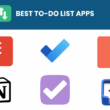Table of Contents Show
In this article, we will explore key strategies that can help you enhance your team’s performance and streamline operations.
From setting clear goals to promoting a positive work environment, we will delve into actionable steps that can drive results. So let’s dive in and unlock the secrets of workplace efficiency!
How to Achieve Workplace Efficiency?
You can make your workplace productive and efficient by following these steps:
1. Setting Clear Goals
Setting clear goals is crucial for maximizing workplace efficiency. By defining objectives, you provide a clear direction for your team and ensure everyone is working towards the same outcome.
a. Defining objectives
Identifying the purpose and vision of the organization is crucial for defining objectives. This allows teams to have a clear understanding of their role in achieving the overall goals.
Understanding specific goals for each department or team ensures that everyone is working towards a common objective, optimizing time and tasks. Moreover, aligning individual objectives with organizational ones promotes productivity and fosters a sense of ownership among employees.
b. Establishing measurable targets
Creating SMART goals is essential for establishing measurable targets in the workplace. By ensuring that goals are Specific, Measurable, Achievable, Relevant, and Time-bound, we can effectively track progress and measure success.
Setting key performance indicators (KPIs) allows us to focus on specific areas of improvement and monitor our productivity over time. Defining clear metrics ensures that we have a concrete way of measuring the outcomes of our tasks and projects.
2. Streamlining Processes
Streamlining processes is crucial for enhancing workplace efficiency.
a. Identifying bottlenecks and inefficiencies
Conducting a thorough process analysis allows you to uncover bottlenecks and inefficiencies in your workplace. By examining each step of the workflow, you can identify areas of high workload or frequent delays that hinder productivity.
Analyzing data is crucial in identifying recurring issues or inefficiencies. By studying performance metrics and trends, you can pinpoint problem areas and implement targeted solutions to enhance efficiency.
b. Automating repetitive tasks
Evaluating tasks that can be automated is crucial for maximizing workplace efficiency. By carefully analyzing repetitive tasks, you can identify opportunities to streamline your workflow and save valuable time.
Researching software solutions designed specifically for task automation will provide you with a range of options tailored to your organization’s needs. Once you have chosen the most suitable tools, implementing them into your daily operations will revolutionize how work gets done.
3. Effective Communication
Encouraging open and transparent communication fosters a productive work environment where ideas can flow freely, ensuring that everyone is on the same page.
a. Encouraging open and transparent communication
Establishing a culture of open feedback is crucial for workplace efficiency. By encouraging employees to provide honest and constructive input, it fosters a sense of trust and collaboration within the team. This allows for continuous improvement and ensures that everyone’s ideas are valued and considered.
Promoting active listening among team members is another important aspect of open communication. Actively listening to colleagues’ perspectives not only demonstrates respect but also leads to better understanding and more productive discussions. It encourages empathy, reduces misunderstandings, and ultimately enhances overall teamwork.
Implementing regular team meetings provides an opportunity for open dialogue among all members. These meetings allow for the sharing of information, updates on ongoing projects, and addressing any concerns or challenges collectively. Regular interaction keeps everyone aligned with organizational goals while fostering transparency within the team dynamic.
By establishing a culture of open feedback, promoting active listening, and implementing regular team meetings, organizations can create an environment conducive to effective communication — ultimately leading to enhanced workplace efficiency.
b. Utilizing collaboration tools
Integrating project management software ensures streamlined workflows by centralizing tasks, deadlines, and progress updates in one accessible platform. This eliminates the need for constant email exchanges and allows team members to collaborate seamlessly on projects.
Leveraging video conferencing tools facilitates remote collaboration by enabling face-to-face communication regardless of geographical location. This enhances engagement and teamwork while reducing travel expenses and time constraints associated with in-person meetings.
Using instant messaging platforms promotes quick and efficient communication within teams, allowing for real-time discussions, file sharing, and problem-solving. This helps expedite decision-making processes and ensures everyone is kept informed promptly.
By incorporating these collaboration tools into your workflow, you can enhance workplace efficiency through improved coordination, accessibility to information, and effective communication strategies.
4. Optimizing Time Management
Time management optimization is necessary for workplace efficiency. You can do it by:
a. Prioritizing tasks and deadlines
Setting clear goals and objectives is crucial for prioritizing tasks and deadlines. By clearly defining what needs to be accomplished, you can focus your efforts on the most important tasks that align with the overall objectives of your project or organization.
Analyzing the urgency and importance of each task further helps in deciding which ones require immediate attention and which can be delegated or postponed. Creating a prioritization matrix allows you to visually assess and rank tasks based on their impact and time sensitivity, enabling you to tackle them in an organized manner that maximizes productivity.
b. Eliminating distractions
Implementing time-blocking techniques allows you to allocate specific periods for focused work, increasing productivity and efficiency. By setting aside dedicated blocks of time for different tasks, you can prioritize your workload and stay on track without getting distracted by non-essential activities.
Minimizing interruptions from email and notifications is crucial in maintaining a distraction-free work environment. By turning off unnecessary alerts and establishing designated times to check emails, you can enhance your ability to concentrate on important tasks without constant disruptions.
Designating a distraction-free workspace provides the ideal conditions for optimal focus and productivity. Whether it’s finding a quiet corner in the office or creating a separate area at home, having a dedicated space free from distractions helps train your mind to be more efficient and engaged with your work.
5. Promoting a Positive Work Environment
A positive work environment is necessary to have productive teams and to have workplace efficacy.
a. Fostering teamwork and cooperation
Encouraging open communication is crucial for fostering teamwork and cooperation in the workplace. By creating an environment where employees feel comfortable expressing their ideas, concerns, and feedback, collaboration becomes more effective. This not only enhances productivity but also promotes trust and strengthens relationships among team members.
Promoting collaboration across departments is another essential strategy to foster teamwork and cooperation. Breaking down silos and encouraging cross-functional projects allows different teams to share their expertise, insights, and resources. This interdepartmental collaboration leads to innovative solutions, improved decision-making processes, and a greater sense of unity within the organization.
Implementing team-building activities can significantly contribute to building strong bonds among employees. Engaging in activities such as group challenges or workshops fosters better communication skills, problem-solving abilities, and mutual understanding within teams. These activities provide opportunities for individuals to connect on a personal level outside of work tasks while enhancing their ability to work together effectively towards shared goals.
b. Recognizing and rewarding achievements
Establishing a formal recognition program is essential for acknowledging and appreciating employee achievements. By implementing a structured system, employees feel valued and motivated to continue performing at their best.
Additionally, providing regular feedback and constructive criticism allows individuals to grow professionally while maintaining workplace efficiency. Lastly, offering incentives for high-performing employees not only recognizes their efforts but also encourages others to strive for excellence in order to be rewarded.
6. Continuous Learning and Improvement
Investing in employee training is crucial for achieving workplace efficiency. By providing ongoing opportunities for learning and development, employees can acquire new skills and stay updated with the latest industry trends. This not only enhances their performance but also fosters a culture of continuous improvement within the organization.
Implementing feedback loops is another key strategy for driving workplace efficiency. Regularly seeking input from employees, customers, and stakeholders allows organizations to identify areas of improvement and make necessary adjustments swiftly. By leveraging feedback to fine-tune processes and address issues proactively, businesses can optimize their operations and deliver better outcomes.
Conclusion
In conclusion, achieving workplace efficiency requires a combination of strategies and practices. By investing in employee training, identifying skill gaps, and encouraging ongoing professional development, organizations can ensure that their employees have the necessary knowledge and skills to perform their jobs effectively. Share your feedback in the comments below.
Check these out:










